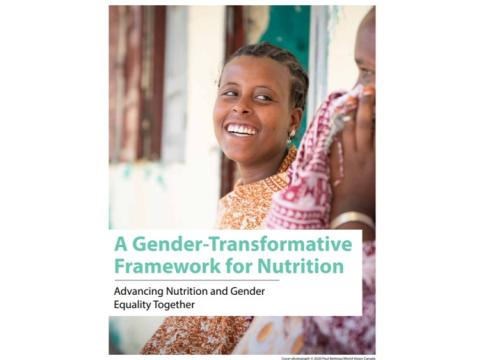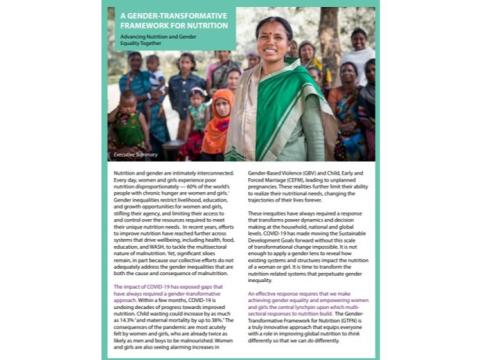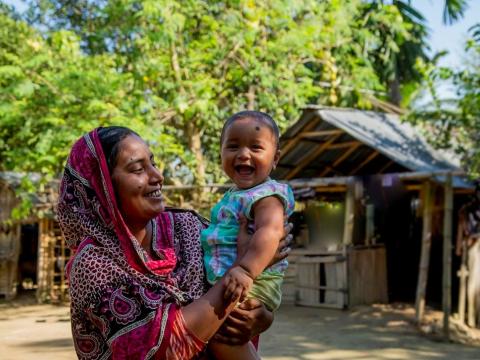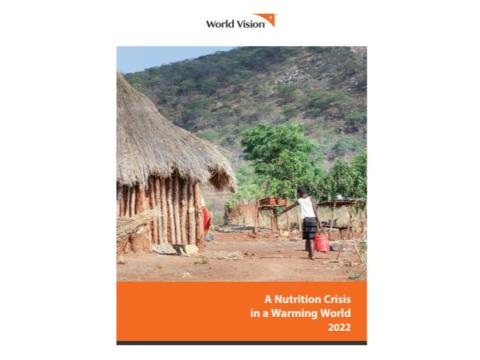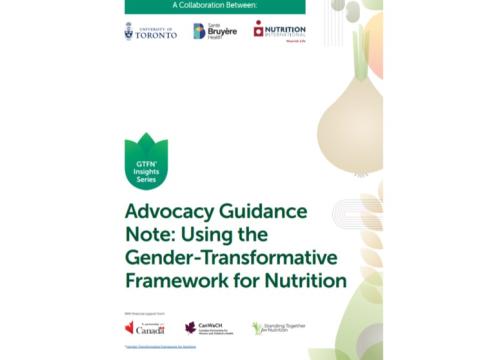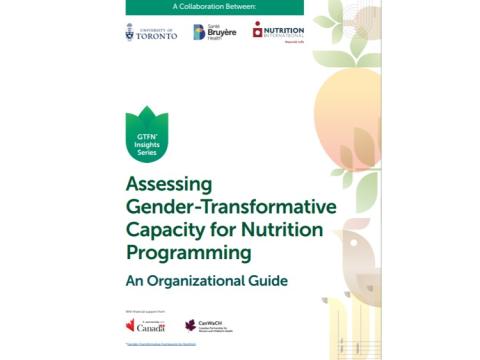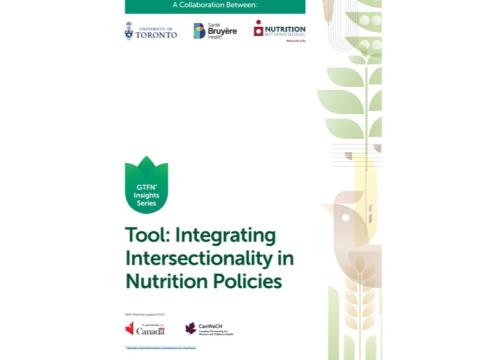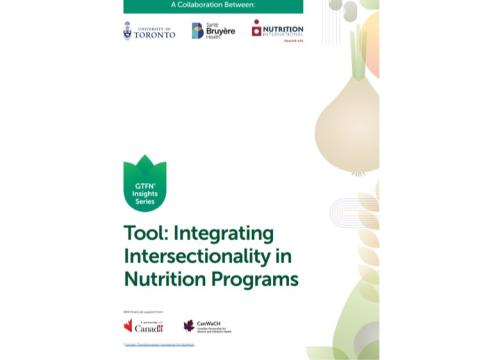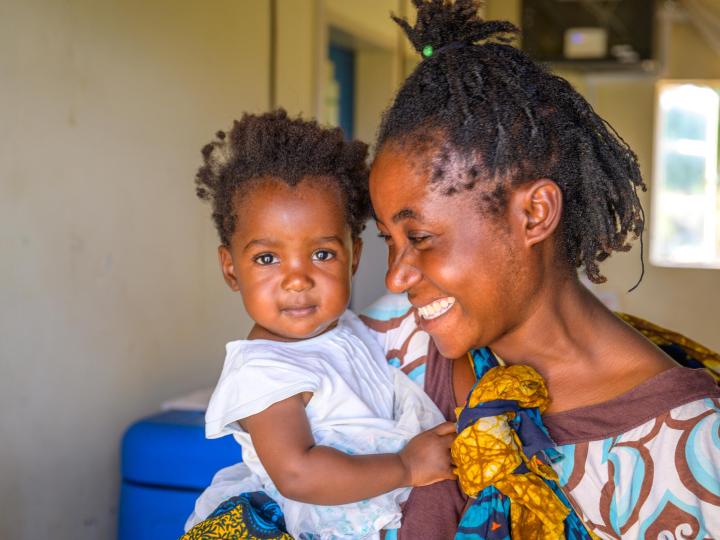
Gender-Transformative Framework for Nutrition
Nutrition and gender are intimately interconnected. Every day, women and girls experience poor nutrition disproportionately. Women's and girls’ nutrition experience is influenced by the sociology and politics of how food is produced and consumed and how nutrition services are provided and used. Energy and nutrient requirements are informed both by sex and biology on the one hand, and gender roles and responsibilities on the other. In this way, gender inequality is both a cause and a consequence of malnutrition, which can trap women and girls in a vicious multigenerational cycle of poverty and unmet potential.
- 60% of the world’s people with chronic hunger are women and girls.
- Micronutrient deficiencies remain significant concerns that disproportionately affect women and girls.
- Anaemia is a leading cause of death for pregnant teenagers and the leading cause of disability for adolescent girls.
- Gender inequalities restrict livelihood, education, and growth opportunities for women and girls, limiting access to and control over the resources needed to meet their unique nutrition needs.
Partnering to advance gender-transformative approaches in nutrition
To address these persistent gender and nutrition challenges, World Vision joined forces with several organisations with decades of experience in nutrition and gender programming in 2020 to form a coalition.

Together, the coalition developed the Gender-Transformative Framework for Nutrition (GTFN), a shared approach to:
- Strengthen gender analysis in nutrition programming
- Support the design, implementation, and evaluation of gender-transformative interventions
- Identify research and evidence priorities to advance gender equality and improved nutrition outcomes
The GTFN is an innovative approach that equips everyone with a role in improving global nutrition to think differently so that we can do differently.
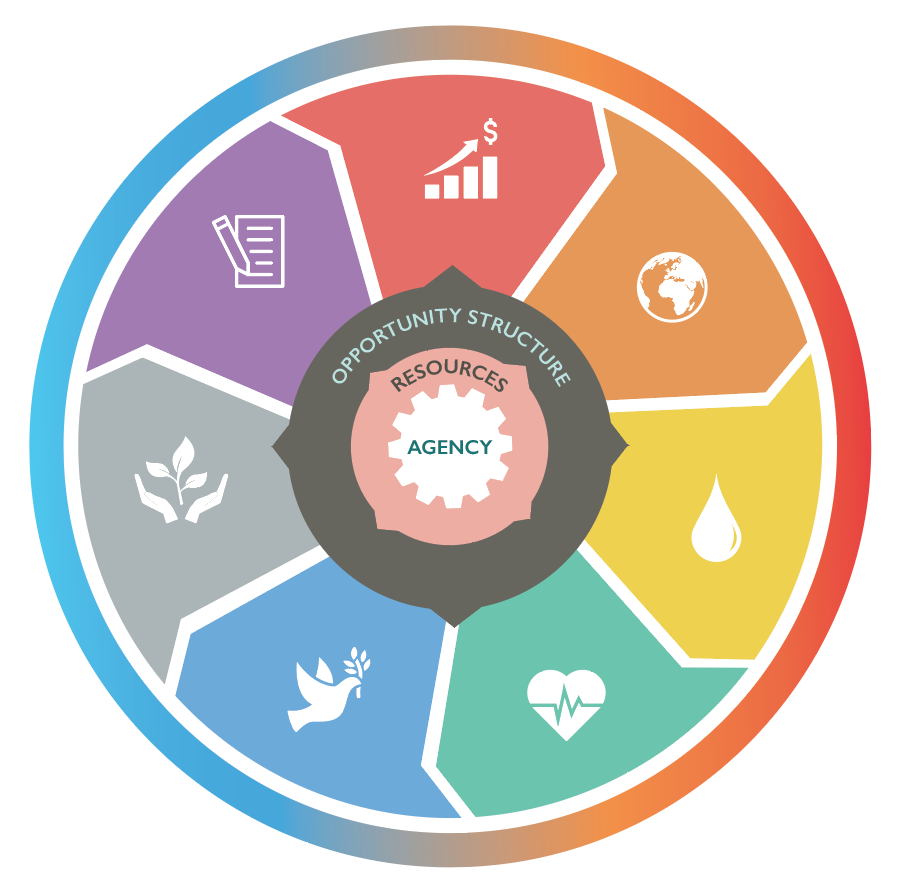
Why a Gender-Transformative Framework for Nutrition?
To date, some efforts have been made to 'integrate' or 'mainstream' gender into nutrition programmes, but wide gender disparities persist because these efforts have not addressed the root causes of the problem. It is insufficient, and many times harmful, to seek to improve individual women's and girls’ situations without addressing the discriminatory gender norms and unequal power imbalances between women and men that contribute to gender inequality and malnutrition.
An effective response requires that gender equality and the empowerment of women and girls becomes the central foundation upon which multi-sectoral responses to nutrition are built. Traditional power holders and influencers must be engaged in this process. They are important gender champions. Mobilised as agents of change, working together with women and girls and people of diverse gender identities, they can use their positions of power to shape systems to create a more equitable world for all.
Localised, transformational change that is profound and resilient is vital to deep and lasting impact. This demands radical breakthroughs in paradigms, beliefs, and behaviour at various levels.
What is the Gender-Transformative Framework for Nutrition?
At its core, the Framework has an understanding that agency, resources, and opportunity structure are fundamentally linked and interact to influence the degree to which women and girls will experience empowerment across the areas of their lives. Within the GTFN, these are expressed as the empowerment circles.

At the centre of the framework is the concept of agency, or the ability to define one’s goals and act upon them. Agency is most often thought of as decision-making power, but it also includes the ability to negotiate, influence, or exert control over one’s life.
In order to be able to act, women and girls must also have the necessary resources to do so. This can include everything from financial assets and material wealth, to essential infrastructure, information, time and labour, mobility, and bodily integrity.
It is possible that women have the capacities above, yet find themselves constrained by the opportunity structure around them and are unable to act towards their intended goals. Opportunity structure refers to the presence and operation of formal and informal institutions, including the laws, regulatory frameworks, and norms governing behaviour that affect women and girls’ agency and access to resources.
Women’s empowerment occurs when each of these elements are activated and mutually reinforcing. A key element of applying women’s empowerment theory within nutrition programming is to understand that power imbalances and resulting gender inequalities have a direct impact on the nutritional status of women and girls, and that poor nutrition is fundamentally disempowering.
The GTFN then modularises the multi-sectoral dimensions of malnutrition to form the outer circle. The central placement of the empowerment circles enables users to understand the systemic impacts of gender inequality within each of these domains, to identify the interaction between domains that contribute to malnutrition among women and girls, and the entry-points for action that harness agency, resources and opportunity structure to drive large-scale, enduring change.
The Intersection of Food Systems and Health Services
The GTFN demonstrates that even when sectoral responses to address the underlying causes of malnutrition are delivered in silos, these still interact. These interactions culminate in either enabling or frustrating a woman's or girl’s overall effort to engage with these delivery systems to satisfy their own nutritional needs, or that of their family’s.
This intersection can be clearly seen as adolescent girls navigate both food and health systems to satisfy their needs. Challenges around dietary and health-seeking practices are particularly acute for adolescent girls who biologically have increased nutritional needs, yet are often the most marginalised, with least power to make decisions regarding access to health services, diet, and their own bodies. For adolescent girls, having agency over what they consume and their sexual and reproductive health and rights (SRHR), has a direct impact on their ability to participate in formal and informal education. Girls who have control over their diet, including the consumption of iron rich foods and supplementation, are less likely to suffer from anaemia, miss less days of school, have better school performance, and overall, more energy. Coupled with increased agency over SRHR, it means these girls will avoid unintended pregnancies, stay in school longer and succeed in higher levels of education. This has a significant impact on their transition into adulthood, both for their nutritional and economic well-being.
Tools & Guidance
These tools and guidance notes were developed as part of the Canadian Collaborative for Global Health.
About Us
We are a coalition of agencies with decades of experience in nutrition and gender programming, united by a shared commitment to advancing gender-transformative approaches in nutrition.
The coalition was formed in 2020 with a shared interest to develop and promote a gender-transformative framework to support improved gender analysis, design and evaluation of nutrition approaches and interventions for gender equality, and to identify research and evidence generation priorities.

MotherFood International was a member of the coalition from 2020 to 2022.
